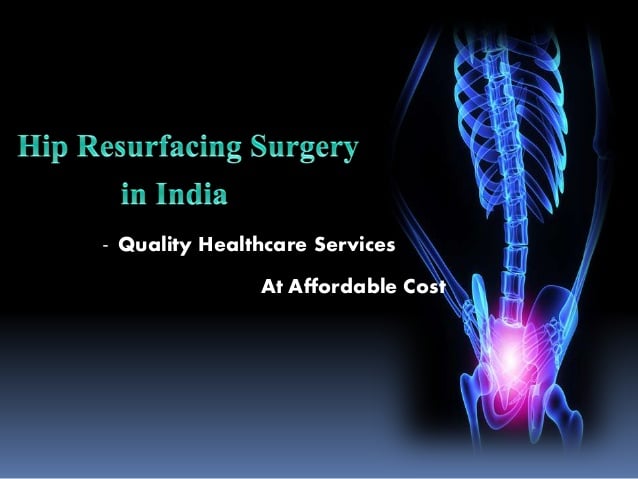Hip Replacement & Resurfacing Surgery Cost in India (2025) | Affordable & Advanced Care
Medically reviewed by Dr. Neelabh, MS (Ortho) Educational information only—not a substitute for medical advice. Prices vary by hospital, city, implant choice, and clinical needs. Always request a written, itemized quote.
Comparing hip replacement surgery cost in india can be confusing because hospitals package costs differently. For a fair comparison, look at the total package (not just the implant): surgeon and anesthesia fees, OT/consumables, implant(s), room category, nursing, and physiotherapy. Device pricing is influenced by NPPA policy, hospital procurement, and the exact brand/model used.

On this page
- Hip replacement surgery cost in india — quick snapshot
- Typical package ranges by surgery type
- What drives your cost
- What’s included in a package
- Hip replacement vs hip resurfacing (who is it for?)
- Implants, bearings, and fixation
- Surgical approaches (anterior vs posterior)
- Insurance and government schemes
- How to compare quotes
- FAQs
Hip replacement surgery cost in india — quick snapshot
- Total hip replacement (one hip): commonly ₹2,50,000–₹6,50,000+ per hip in private hospitals (roughly USD 3,000–7,000 for international packages).
- Bilateral hip replacement (both hips, same sitting): often ₹4,50,000–₹11,00,000+ for the full package.
- Hip resurfacing (select patients): typically ₹3,50,000–₹7,50,000+.
- Hemiarthroplasty for fracture: usually ₹1,50,000–₹3,50,000+.
- Revision hip replacement: commonly ₹5,50,000–₹12,00,000+ due to complex implants and longer OT time.
Metro tertiary centers, premium bearings (e.g., ceramic on HXLPE), cementless fixation, and navigation/robotics tend to increase the hip replacement surgery cost in india.
Typical package ranges by surgery type
| Surgery type | Common package range (₹) | Notes |
|---|---|---|
| Total hip replacement (unilateral) | 2,50,000 – 6,50,000+ | Implant bearing/fixation, hospital tier, room, and technology affect price. |
| Total hip replacement (bilateral, same sitting) | 4,50,000 – 11,00,000+ | Two implants + longer OT; confirm DVT prophylaxis and rehab plan. |
| Hip resurfacing (select candidates) | 3,50,000 – 7,50,000+ | Younger, active patients only; not suitable for osteoporosis. |
| Hemiarthroplasty for fracture | 1,50,000 – 3,50,000+ | Varies by stem type and length of stay. |
| Revision hip replacement | 5,50,000 – 12,00,000+ | Complex implants (stems/cups/cones), extra consumables, longer rehab. |
What drives your cost
- Hospital and city: Metro tertiary centers price higher than tier‑2/3 cities.
- Implant selection: Bearing combo (ceramic‑on‑poly, ceramic‑on‑ceramic, metal‑on‑poly), cup/stem design, and brand.
- Fixation: Cementless vs cemented; cementless is common in younger good bone; cemented often for osteoporosis.
- Technology: Navigation/robotics and patient‑specific instruments add planning/equipment fees.
- Case complexity: Deformity, bone loss, prior surgery increase OT time and consumables.
- Room category & stay: Private rooms and extensions raise the package.
- Payer: Self‑pay vs insurance/TPA vs government schemes have different tariffs.
What’s included in a package (and what to verify)
- Usually included: Surgeon + anesthesia fees, OT charges, standard consumables, implant(s), routine labs/imaging, standard stay, nursing, early physiotherapy.
- May be extra: Room upgrades, ICU, blood products, extended physio, additional imaging, comorbidity management, special braces/walkers.
- Device transparency: Ask for brand, model, sizes, lot numbers, and MRP stickers per NPPA norms.
Hip replacement vs hip resurfacing (who is it for?)
- Total hip replacement (THR): Replaces the femoral head and acetabular surface. Broadly suitable; excellent long‑term outcomes.
- Hip resurfacing: Bone‑conserving cap on the femoral head with a matching cup. Typically reserved for younger, active patients with good bone quality and larger femoral heads.
Important: Most resurfacing implants use metal‑on‑metal bearings. They are generally not recommended for patients with osteoporosis, small bone size, renal issues, metal sensitivity, or in many women of child‑bearing potential. Discuss benefits/risks, metal ion monitoring, and alternatives with your surgeon.
Implants, bearings, and fixation
- Bearings: Modern choices include ceramic‑on‑polyethylene (HXLPE), ceramic‑on‑ceramic, and metal‑on‑polyethylene. Metal‑on‑metal is rarely used today outside specific resurfacing indications.
- Fixation: Cementless cups/stems encourage bone ingrowth (common in younger patients); cemented fixation is often preferred with osteoporotic bone.
- Longevity: Many modern hips show high survivorship beyond 15–20 years when well positioned and rehabilitated; see the UK National Joint Registry and AOANJRR.
Surgical approaches (anterior vs posterior)
- Posterior approach: Most common; wide exposure and excellent outcomes.
- Anterior approach: Muscle‑sparing pathway; may aid early recovery for some. Outcomes depend more on surgeon expertise than incision location.
Insurance and government schemes
- Private insurance/TPA: Confirm network hospital, room eligibility, pre‑auth amount, co‑pays, and refundable deposits.
- Government schemes: CGHS/ECHS and Ayushman Bharat PM‑JAY have notified packages at empanelled centers; availability varies by state/hospital.
How to compare quotes
- Written, itemized package with inclusions/exclusions and expected length of stay.
- Device specifics: brand, model, bearing, fixation, and MRP stickers — these drive hip replacement surgery cost in india.
- Technology fees: robotics/navigation, patient‑specific guides.
- Room category, per‑day extension charges, and post‑discharge physiotherapy plan.
Get a personalized estimate
Share your X‑rays, clinical details, and preferred room category to receive a like‑for‑like package quote for hip replacement surgery cost in india.
FAQs
Is hip resurfacing better than total hip replacement?
Neither is universally “better.” Resurfacing preserves bone and may suit select younger, active patients with good bone quality; THR suits a broader group with excellent long‑term results. Your surgeon will recommend based on age, anatomy, activity goals, and bone quality.
How long do hip implants last?
Many modern hips last 15–20+ years when aligned correctly and supported by good rehab and weight management. See the NJR patient resources and AOANJRR annual reports.
What’s the safest way to keep costs predictable?
Use a network hospital, confirm room eligibility, get a written itemized quote, and request device transparency per NPPA. Compare like‑for‑like packages before deciding.
Related resources
- Knee joint replacement surgery cost in India
- Knee replacement recovery: week‑by‑week
- NHS guide to hip replacement
Disclaimer: Price ranges are informational and not binding. Final packages depend on clinical evaluation, device selection, and hospital policy. We do not endorse any single product or technology.

